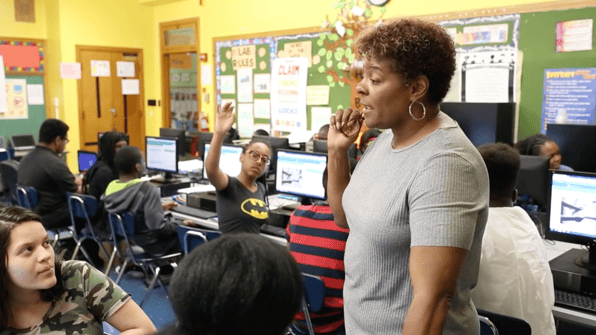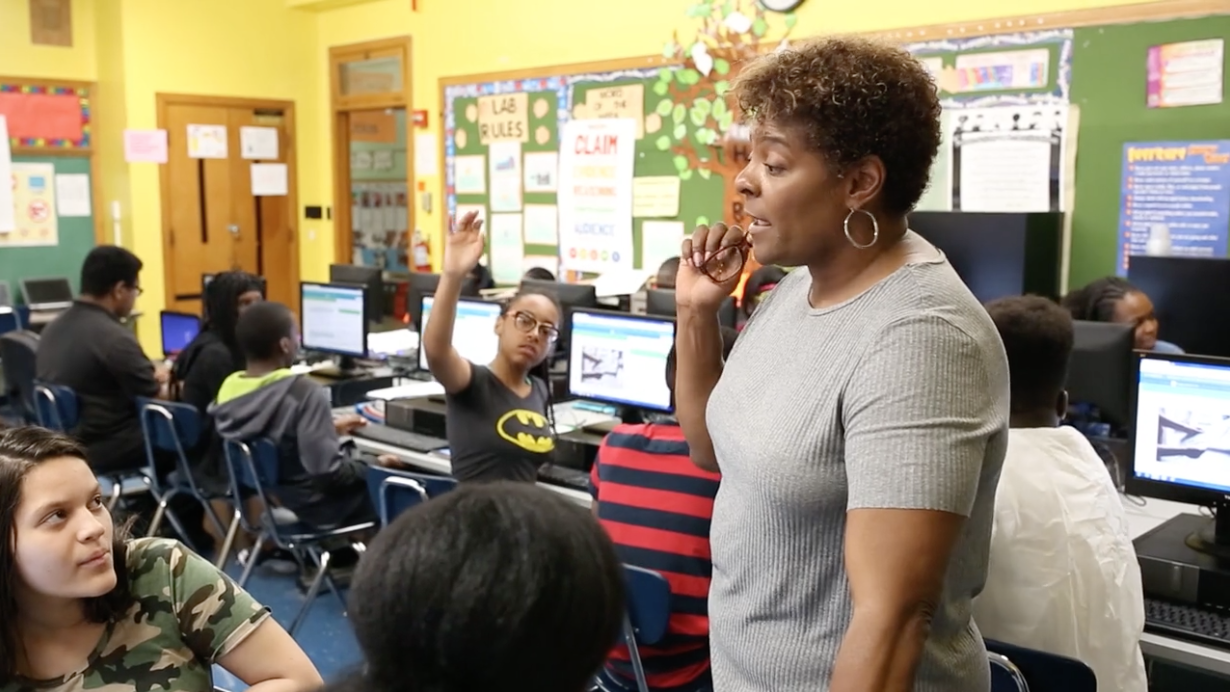
Teacher Perspective: How I Teach Critical Thinking
One teacher's refined process and favorite lessons to help students gain career and college readiness skills

Barbara's students work on an argumentative writing lesson.
In Barbara Wade's classroom, every student learns how to think critically and value the skill.
Critical thinking, Barbara says, "Means my students being able to think through things on their own...to peel back layers to get to something meaningful."
In order to help her students solidify these lifelong skills, Barbara brings differentiated and authentic texts, argumentative writing, class-wide discussions and debates, and student choice and voice into the classroom.
Barbara's Process to Teach Critical Thinking:
- Front-load students on a topic.
- Use ThinkCERCA to build their understanding.
- Take students on a field trip to see the connection between the classroom and the real world.
- Engage in a project using the knowledge/work from classroom assignments, ThinkCERCA, and field experience.
"Each of these steps help my students to go deeper and deeper in understanding their topic, empathetically, creatively, and logically," Barbara says.
Here are some of Barbara's favorite ThinkCERCA lessons to teach critical thinking:
Favorite CERCA Set: Entrepreneurship

- Essential question: How can entrepreneurs change the world?
- Subject: ELA
- Levels: Lessons available for grades 3-12
- Theme: Money and Needs
- Standards (Two per lesson): CCSS.RI.3.3, CCSS.W.3.1, CCSS.RI.4.3, CCSS.W.4.1, CCSS.RI.5.3, CCSS.W.5.1, CCSS.RI.6.3, CCSS.W.6.1, CCSS.RI.7.3, CCSS.W.7.1, CCSS.RI.8.3, CCSS.W.8.1, CCSS.RI.9-10.3, CCSS.W.9-10.1, CCSS.RI.9-10.3, CCSS.W.9-10.2, CCSS.RI.11-12.3, CCSS.W.11-12.1, CCSS.RI.11-12.3, CCSS.W.11-12.1
Favorite Applied Reading & Writing Lesson (1): Bill Gates and Steve Jobs

- Writing prompt: Whose vision was more influential: Bill Gates or Steve Jobs?
- Level: Grade 8
- Standards: CCSS.RI.8.3, CCSS.W.8.1
Favorite Applied Reading & Writing Lesson (2): Forty Kids and Counting

- Writing prompt: How did the events in Doyne's life influence her to open the Kopila Valley Children's Home and School?
- Level: Grade 7
- Standards: CCSS.RI.7.3, CCSS.W.7.1
Favorite Direct Instruction Lesson: The Writing Process

- Description: In this lesson students will learn about the process for academic writing, including prewriting, drafting, revising, editing, and publishing their work.
- Level: Grades 6-12
- Standard: CCSS.W.6.4

Mallory Busch is ThinkCERCA's Editor of Content Strategy. A graduate of Northwestern University, Mallory came to ThinkCERCA from stops in audience strategy at TIME magazine and news applications development at Chicago Tribune and The Texas Tribune. She holds degrees in Journalism and International Studies, and was a student fellow at Knight Lab in college.
